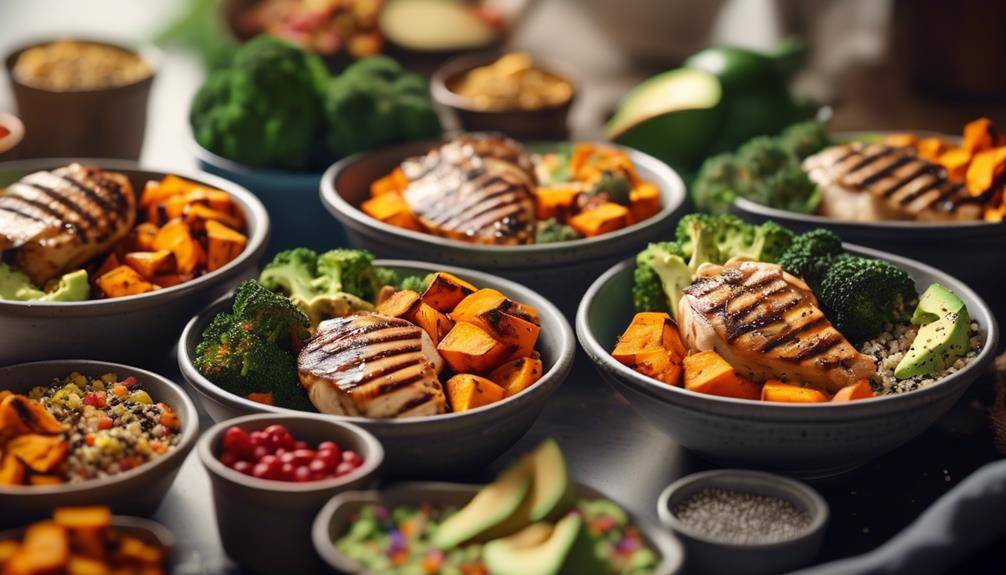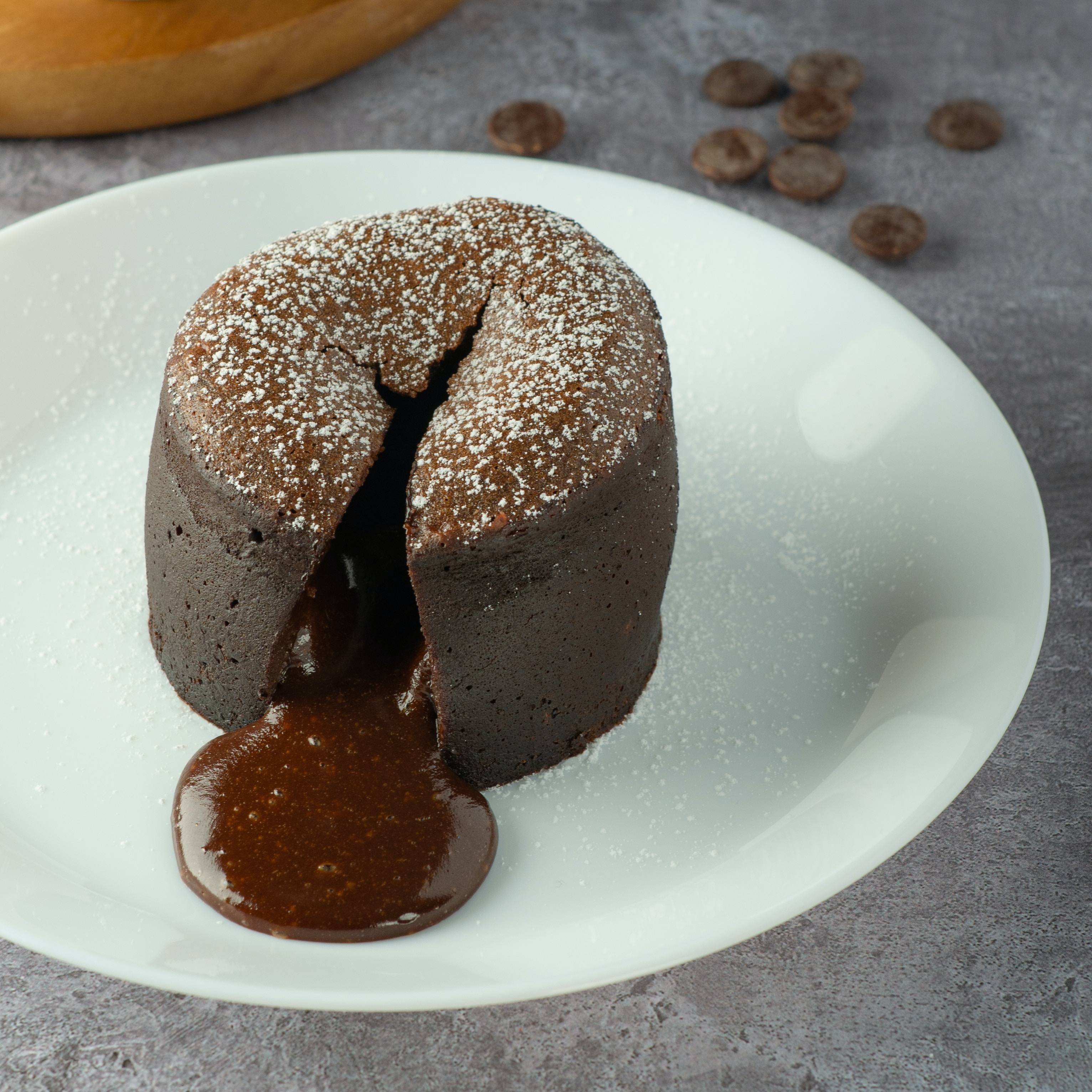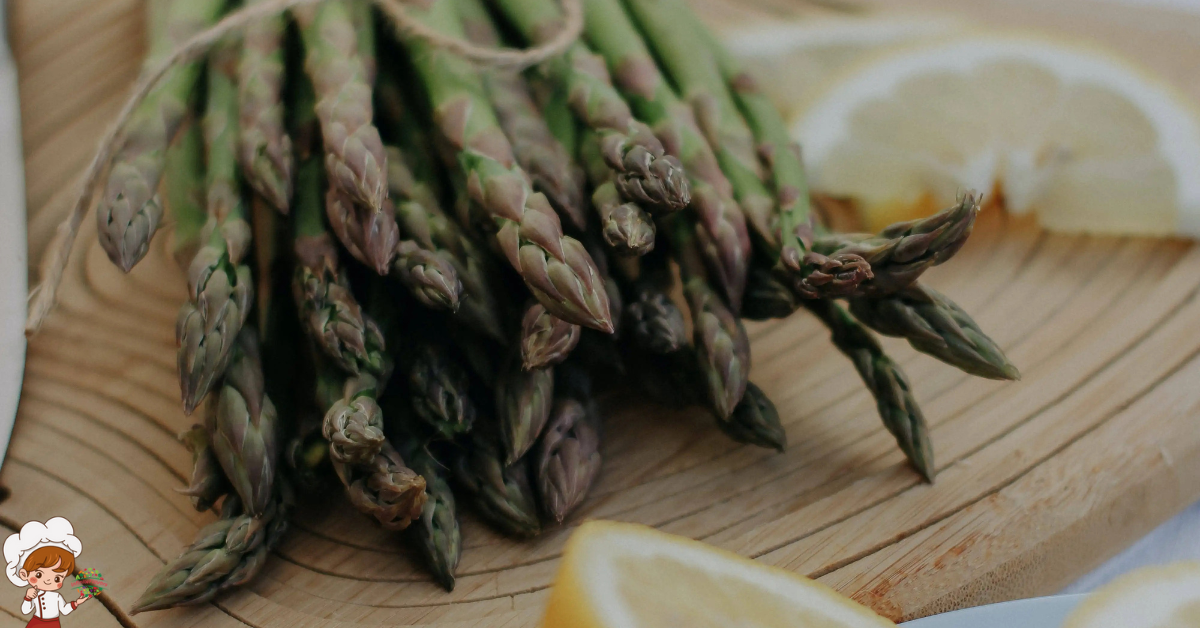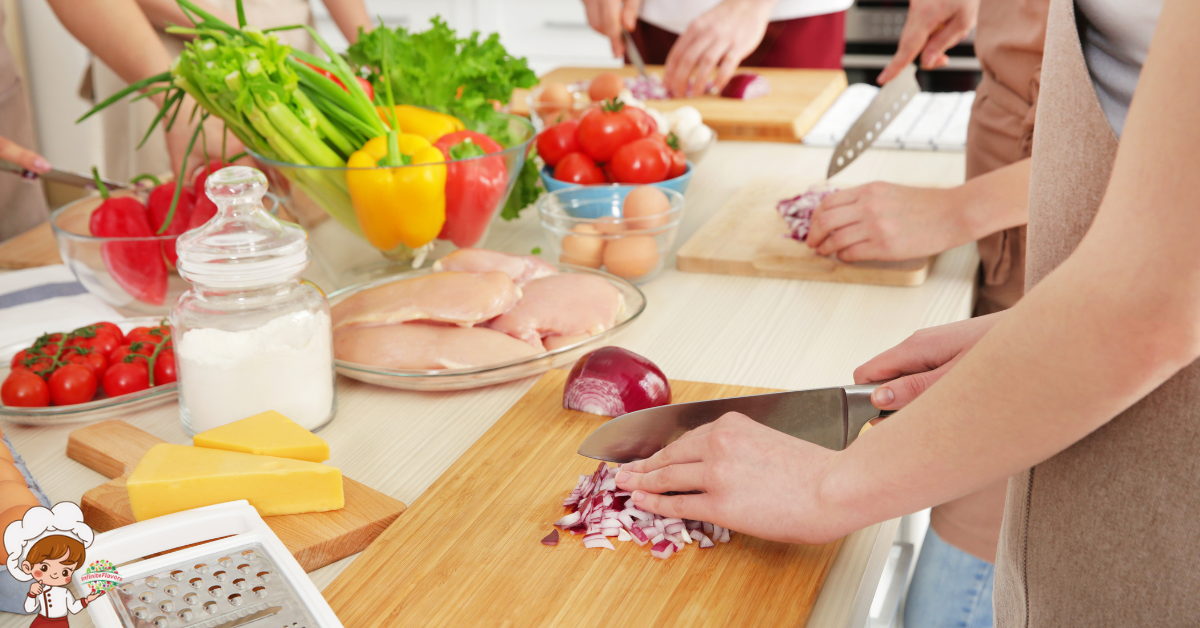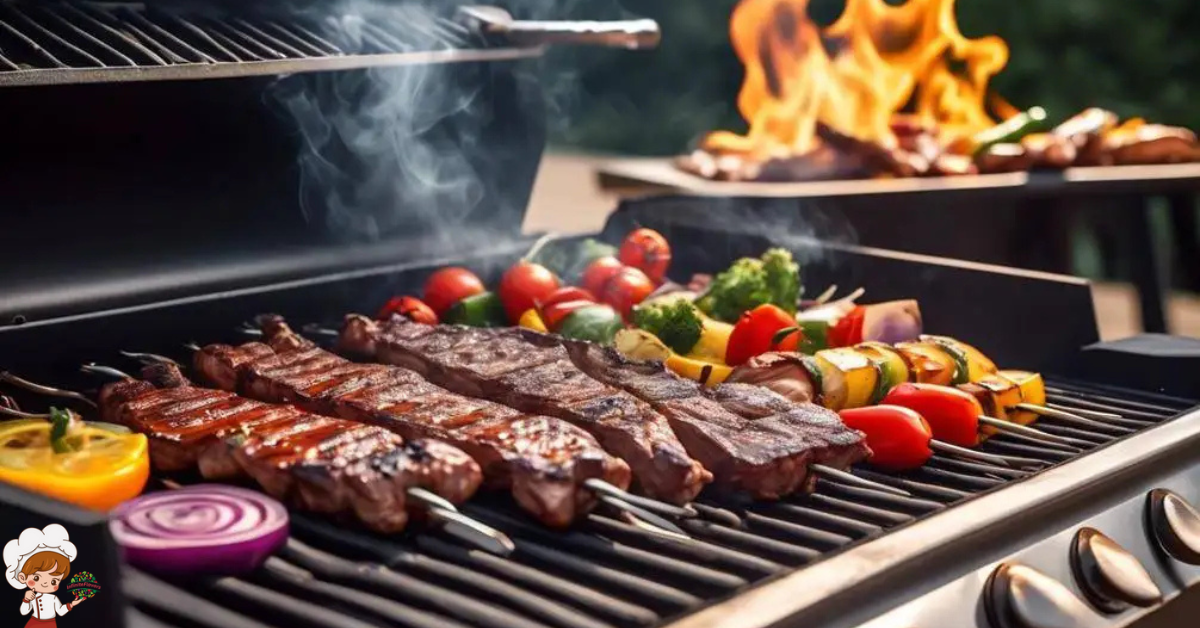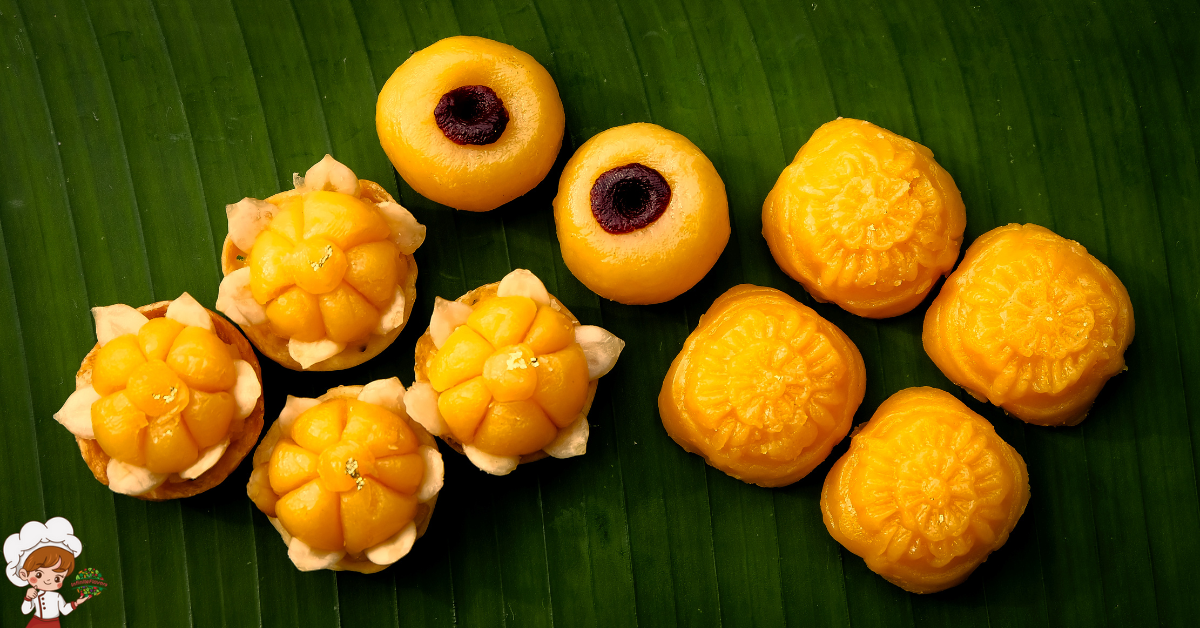The Amazing Role Of Glazing In Cooking
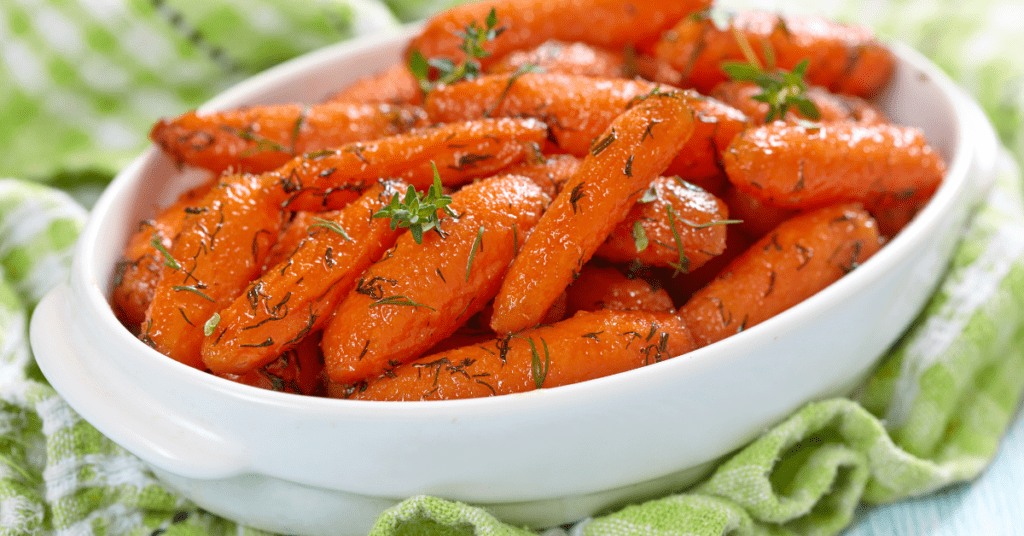
The Amazing Role Of Glazing In Cooking; Glazing in cooking boosts the visual and flavor appeal of your dishes. It adds a shiny finish and creates layers of taste that bring balance to sweetness and savory elements. Whether you’re making sweet desserts or savory meats, glazes can transform your meal into something special. You can experiment with various types of glazes—like fruit, chocolate, or herb-infused ones—to enhance your culinary creations. Timing and thickness matter, too, for the best results. Mastering the art of glazing can elevate your cooking game, and there’s plenty more to explore that can inspire your next dish.
Understanding Glazing
Glazing in cooking is a technique that enhances both the appearance and flavor of your dishes. It’s not just about making your food look shiny and appealing; this method has deep roots in glazing history and holds cultural significance across various cuisines. When you apply a glaze, you’re often adding a layer of sweetness or richness, creating a delightful contrast to savory elements in your meal.
Throughout history, different cultures have embraced glazing to elevate their culinary creations. For instance, in Asian cuisine, glazes are frequently used to finish meats and vegetables, giving them a glossy finish while infusing them with flavor. In European cooking, glazes have been used for centuries, especially in pastries and desserts, where you’ll find a shiny coat that makes the dish irresistible.
Understanding glazing goes beyond the surface. It allows you to experiment with flavors and textures, bringing a new dimension to your cooking. You might be surprised at how a simple glaze can transform a mundane dish into an extraordinary one. By mastering the art of glazing, you’re not just enhancing your food; you’re connecting with a rich culinary tradition.
As you explore glazing, remember its importance in various cuisines. It’s a technique that transcends borders, reflecting the creativity and innovation of chefs throughout history. So, embrace glazing, and let it inspire your culinary journey!
Types of Glazes
There are several types of glazes you can use in your cooking, each offering unique flavors and finishes. For instance, fruit glazes infuse your dishes with sweetness and a touch of acidity, perfect for glazing meats or drizzling over vegetables. Caramel glazes provide a rich, buttery finish that enhances both savory and sweet dishes.
If you’re looking for something with a bit of umami, soy glazes can elevate your stir-fries or grilled proteins. On the other hand, herb glazes bring vibrancy to your plates, combining herbs with oils or vinegars to create vibrant, aromatic coatings. For a zesty kick, citrus glazes are fantastic, blending the brightness of lemon or orange to brighten up seafood or chicken.
Maple glazes add a unique sweetness that pairs surprisingly well with roasted vegetables or pork. If you’re feeling adventurous, balsamic glazes offer a tangy, sweet reduction that complements salads and grilled meats beautifully. For a creamy touch, yogurt glazes can soften the flavors of spicy dishes while adding a revitalizing finish.
For those who crave heat, spicy glazes deliver a kick that can transform your favorite recipes. Finally, chocolate glazes, while typically reserved for desserts, can also bring a surprising depth to savory dishes when used creatively. By experimenting with these various types of glazes, you can elevate your cooking and impress your guests with an array of flavors and textures.
Sweet Glazes for Desserts
When it comes to sweet glazes for desserts, you’ll find that they can elevate your treats to a whole new level of deliciousness. These glazes not only add flavor but also enhance the visual appeal of your creations. Fruit-based glazes, for instance, can bring a burst of freshness, perfect for topping cakes or tarts. You might love the vibrant colors and the sweet-tart balance they offer.
Chocolate glazes are another favorite, adding richness to brownies or éclairs. Whether you pour it over a cake or dip your pastries, the glossy finish is irresistible. Citrus glazes, infused with lemon or orange, add a zesty twist that pairs beautifully with a variety of desserts, especially during the warmer months.
Caramel glazes provide a luxurious touch, drizzling over cheesecakes or sticky buns for that sweet, buttery flavor. If you’re looking for something unique, nutty glazes can introduce texture variations that surprise and delight your palate. You might also explore herbal glazes, using ingredients like basil or mint to add an unexpected freshness.
Dairy glazes, like cream cheese or yogurt-based ones, can lend a creamy texture that complements cakes and pastries well. Don’t forget festive and seasonal glazes that capture the essence of holidays, whether it’s a spiced pumpkin glaze for fall or a peppermint glaze for winter treats. Each glaze can transform your dessert, making it a memorable experience for those who indulge.
Savory Glazes for Meats
When it comes to savory glazes for meats, you’ll find a variety of flavors and techniques that can elevate your dishes. From tangy barbecue sauces to rich reductions, each type adds a unique touch to your meal. Let’s explore the different kinds of savory glazes and how to apply them for maximum impact.
Types of Savory Glazes
Savory glazes can elevate your meat dishes, adding both flavor and a beautiful sheen. With a variety of options, you can easily find the perfect glaze to complement your culinary creations. Start with herb infusions, like rosemary or thyme, which bring freshness and aroma. For a zesty kick, incorporate citrus additions such as orange or lemon juice to brighten the flavors.
Alcohol reductions, like red wine or bourbon, provide depth and complexity, while spice blends can add warmth and heat to your glaze. Honey variations introduce sweetness that balances savory notes, and umami boosters, such as soy sauce or miso, deepen the flavor profile.
Consider vinegar choices, like balsamic or apple cider, which can add tanginess and help cut through richer meats. Mustard mixes can bring a sharp, piquant element, perfect for glazing pork or chicken. If you’re craving a smoky essence, explore smoke flavors that can enhance grilled meats. Finally, fruit purees, such as apricot or cherry, offer a sweet and fruity glaze that pairs beautifully with various proteins. Experiment with these types of savory glazes to discover your favorite combinations!
Techniques for Application
Applying a glaze to meats requires careful timing and technique to achieve the best flavor and finish. Start by marinating your meat with a savory glaze, allowing it to absorb those rich flavors. Understanding the glazing history can enhance your approach; for instance, many cultures have their unique glaze recipes, offering diverse tastes and textures.
When cooking, it is crucial to apply the glaze at the right moment. For most meats, like chicken or pork, brush on the glaze during the last 10 to 15 minutes of cooking. This prevents burning while still allowing the glaze to caramelize beautifully. Keep in mind the cultural variations in glazes—some might use honey and soy sauce, while others prefer a blend of mustard and herbs.
For a shiny finish, consider basting your meat every few minutes, building up layers of flavor. Remember to monitor the temperature; too high, and your glaze can turn bitter. Finally, let the glazed meat rest before serving. This allows the juices to redistribute, ensuring every bite is as flavorful as possible. Enjoy the delicious results of your glazing efforts!
Vegetable Glazing Techniques
Glazing vegetables can elevate their flavor and appearance, turning simple sides into standout dishes. You can achieve this by using a few effective glazing methods that enhance the natural sweetness and vibrant colors of the vegetables. One popular technique involves sautéing your veggies in a mixture of butter and water, allowing the liquid to reduce and coat them in a glossy finish. This method works wonders for carrots, green beans, and Brussels sprouts, creating appealing vegetable textures that make your dish irresistible.
Another approach is to use a sugar-based glaze. Combine sugar with a splash of vinegar or citrus juice to create a syrupy liquid. Toss your vegetables, like bell peppers or squash, in this mixture, then roast them until caramelized. The result is a rich, flavorful glaze that brings out the best in your veggies.
You can also experiment with stock-based glazes. By simmering vegetables in a flavorful broth, you can infuse them with depth while achieving a light sheen. This method is particularly effective for root vegetables, as it enhances their earthiness.
Don’t forget about the importance of timing. Add your glaze at the right moment—toward the end of cooking—to preserve the vegetable textures and prevent them from becoming overly soft. By using these glazing techniques, you’ll transform ordinary vegetable sides into dishes that not only taste fantastic but also look visually appealing on your table.
The Science of Glazing
When you glaze, you’re not just adding a shiny finish; you’re also influencing the dish’s flavor and texture. Understanding the composition of your glaze and how heat affects it can elevate your cooking. Let’s explore how these factors come together to create that perfect glaze.
Glaze Composition Factors
A successful glaze hinges on several key composition factors that influence both flavor and texture. First, the balance of sweet, savory, and acidic elements plays a vital role. When you combine sugars, like honey or maple syrup, with acids such as vinegar or citrus juice, you create a complex flavor profile. This balance also affects the glaze texture, determining whether it’s thick and rich or light and pourable.
Next, consider the viscosity of your glaze. A thicker glaze will coat your food more effectively, providing that desirable glaze sheen, while a thinner glaze may soak in more, impacting both appearance and taste. Ingredients like cornstarch or arrowroot can help achieve the desired thickness without altering the flavor.
Lastly, don’t overlook the importance of seasonings. Herbs, spices, and aromatics add depth and character to your glaze, enhancing the overall dish. By carefully selecting your ingredients and adjusting their proportions, you can achieve a glaze that not only looks beautiful but also elevates your meal, creating a delightful interplay of glaze texture and sheen.
Heat and Flavor Development
Understanding how heat interacts with your glaze is essential for achieving the best flavor development. When you apply heat, it triggers the caramelization process, transforming sugars in your glaze into complex flavors. This reaction not only deepens the color of your dish but also creates a rich, sweet profile that enhances your food’s overall taste.
As the temperature rises, the glaze thickens and coats your ingredients, locking in moisture while promoting a delightful contrast between the exterior and the tender interior. This is where flavor enhancement truly shines. You’ll notice that the combination of heat and glaze brings out the natural flavors of the food, making each bite more satisfying.
To maximize this effect, regularly monitor the cooking temperature. Too low, and you won’t achieve the desired caramelization; too high, and you risk burning the glaze. Experimenting with different glazes and cooking times can lead to discovering your perfect balance. Remember, patience is key. Allow your ingredients to bask in that heat, letting the glaze do its magic. With practice, you’ll master the art of glazing and elevate your dishes to a whole new level of flavor.
Essential Ingredients for Glazes
Glazes can elevate your dishes with a burst of flavor and an appealing sheen, making them vital in many cooking styles. To create a perfect glaze, you’ll need a few key ingredients that work together to achieve the right glaze thickness and flavor balance.
First, choose a base liquid, such as broth, stock, or fruit juice. These provide the foundation for your glaze, infusing it with depth and richness. Next, consider sweeteners like honey, maple syrup, or brown sugar. They help to caramelize the glaze, contributing to that glossy finish while also adding sweetness.
Acidic components like vinegar or citrus juice are essential for flavor balance. They cut through the sweetness and enhance the overall taste of your dish. You can also add soy sauce or Worcestershire sauce for an umami kick. Don’t forget about spices and herbs; they add complexity and elevate the flavor profile. Fresh herbs like rosemary or thyme can make a notable difference.
For texture, you might want to incorporate a thickening agent, such as cornstarch or arrowroot, which helps to achieve the desired glaze thickness while ensuring it clings well to your food. Remember, the goal is to create a glaze that complements your dish without overpowering it.
Experiment with these ingredients, adjusting quantities to suit your taste. With practice, you’ll master the art of glazing, transforming ordinary meals into culinary delights.
Cooking Methods for Glazing
When it comes to applying a glaze, choosing the right cooking method can make all the difference. Each technique can influence the final taste and appearance of your dish, so it’s crucial to pick one that complements your ingredients. One popular method is roasting. This technique allows the glaze to caramelize beautifully, enhancing the flavors while creating a shiny finish. You’ll want to apply your glaze during the last few minutes of cooking to prevent burning.
Another method is grilling. Grilling gives your food a distinct smoky flavor, which pairs wonderfully with various glaze variations. Brush the glaze on during the last few minutes of grilling to achieve the best results. Remember to keep an eye on it, as the high heat can quickly change your glaze from perfect to burnt.
Sautéing is also a great option. When you sauté, the glaze can mingle with the natural juices of the ingredients, creating a rich sauce. Make sure to add the glaze towards the end of the cooking process to maintain its glossy finish.
Lastly, don’t overlook baking, which has a long glazing history in cuisines around the world. Using the oven allows even heat distribution, ensuring your glaze sets nicely. Whichever method you choose, understanding how each one interacts with your glaze will help you elevate your culinary creations. Enjoy experimenting with different techniques to find your favorite way to apply glazes!
Tips for Perfect Glazing
Achieving the perfect glaze can elevate your dishes to new heights, making them visually appealing and full of flavor. To get there, you’ll need to pay attention to a few key factors, such as glaze thickness and the right glazing tools.
First, consider your glaze thickness. A glaze that’s too thin may not cling well or provide the desired shine, while one that’s too thick can overwhelm the dish. Aim for a consistency similar to heavy cream; it should coat your food without dripping off excessively. You might need to adjust the thickness by adding liquid to thin it or cooking it down to thicken it.
Next, invest in the right glazing tools. A brush is a classic choice for applying glaze, as it allows for even coverage and precision. A spray bottle can also work wonders, especially for larger items or when you want a lighter application. If you’re glazing items like pastries, a spatula is perfect for spreading the glaze evenly.
Before glazing, verify your dish is at the right temperature. A hot surface helps the glaze adhere better and enhances the overall flavor. Additionally, don’t forget to layer the glaze. Applying multiple thin coats can create depth and richness, rather than one heavy layer that can mask the dish’s natural flavors.
Common Mistakes to Avoid
Even with the best tips in mind, it’s easy to make mistakes that can ruin your glazing efforts. One common error is applying the glaze too early in the cooking process. If you slap it on before the food is fully cooked, you risk burning the glaze or ending up with a sticky mess. Instead, wait until your dish is nearly finished to add that shiny coating.
Another mistake is using too much glaze. While it might seem tempting to drown your dish in sauce, remember that less is often more. A thick layer can overpower the flavors and texture you’re aiming for. Aim for a thin, even coating to enhance your dish instead of masking it.
You might also fall for glazing myths, like the belief that all glazes are high in sugar. In reality, many glazes can be made with savory ingredients, adding depth without sweetness. Understanding glazing history can help you appreciate the variety of glazes you can create, from sweet to tangy to spicy.
Lastly, don’t forget about the temperature. Applying cold glaze to hot food can lead to separation and uneven distribution. Instead, warm your glaze slightly before using it for a smoother application. By avoiding these common mistakes, you’ll elevate your glazing technique and create dishes that not only look great but taste fantastic, too!
Flavor Pairings With Glazes
Finding the right flavor pairings with glazes can elevate your dishes to a whole new level. Think about incorporating citrus blends for a zesty kick that brightens up grilled fish or chicken. A glaze infused with herbs like rosemary or thyme can add depth to roasted vegetables, while spice combinations like chili and paprika can create a fiery finish on meats.
Fruit reductions are another fantastic option. A balsamic reduction with strawberries, for instance, can enhance the sweetness of a pork dish, providing a perfect acidity balance. If you’re feeling adventurous, try umami enhancements with soy sauce or miso in your glazes, which can add savory complexity to any dish.
Don’t forget to reflect on seasonal flavors. Fresh peaches in summer or pumpkins in fall can inspire glazes that celebrate the time of year. Texture contrasts also play an essential role; pairing a glossy glaze with crispy skin or crunchy toppings can create a delightful eating experience.
Regional specialties can guide your choices too. For example, a glaze inspired by Asian flavors might include ginger and sesame, while a Mediterranean option could utilize olive oil and lemon. Finally, think about color contrasts—vibrant glazes can make your plate visually appealing, enticing your guests even before they take a bite.
Experiment with these pairings to find what resonates with your palate, and watch how your dishes transform into culinary masterpieces.
Creative Glazing Ideas
When it comes to glazing, don’t forget the sweet side for your desserts or the savory touch for your meats. You can elevate your dishes with a honey glaze on roasted vegetables or a tangy citrus glaze on cakes. Let’s explore some creative ideas that’ll make your meals truly memorable!
Sweet Glazes for Desserts
A variety of sweet glazes can elevate your desserts from ordinary to extraordinary. Think about fruit glazes; a vibrant berry reduction can add a splash of color and a burst of flavor. For chocolate lovers, chocolate glazes can create a rich, glossy finish that’s simply irresistible. Experimenting with icing variations, such as royal icing or cream cheese frosting, allows you to explore different glaze textures that enhance your dessert’s appeal.
Seasonal glazes are another fantastic way to infuse your desserts with unique flavors. Consider a pumpkin spice glaze in autumn or a zesty lemon glaze in summer. Don’t forget about flavor infusions! Adding extracts like almond or vanilla can transform a simple glaze into something special.
When it comes to presentation tips, drizzle glazes artfully over cakes or dip pastries for a professional touch. Different glaze applications can yield diverse results; brushing glazes on warm cakes gives a shiny finish, while pouring them over chilled desserts creates a delightful cascade. With these creative glazing ideas, you’ll take your desserts to a new level, impressing friends and family alike!
Savory Glazes for Meats
Savory glazes can transform your meats into mouthwatering masterpieces. Whether you’re grilling chicken, roasting pork, or baking beef, a well-crafted glaze can elevate the flavors and create a beautiful finish. Try using balsamic vinegar mixed with honey and rosemary for an aromatic glaze that pairs perfectly with lamb. Alternatively, a soy sauce and ginger blend can add a delightful Asian twist to chicken or pork.
If you’re looking for marinade alternatives, glazes can provide that depth of flavor without the lengthy marinating process. Just brush your glaze onto the meat during the last few minutes of cooking, allowing it to caramelize and form a delicious crust.
For ideal glaze storage, consider making larger batches and refrigerating any leftovers. Most savory glazes can last up to a week in the fridge, making them a convenient option for quick weeknight meals. Just remember to give it a good shake or stir before using, as the ingredients may separate over time. With these creative glazing ideas, you’ll have your family and friends raving about your culinary skills, meal after meal.
Frequently Asked Questions: The Amazing Role Of Glazing In Cooking
Can Glazing Be Done in a Microwave?
Yes, you can use microwave techniques to achieve glazing. By applying quick, effective glazing methods, you can enhance your dishes. Just guarantee you monitor the process closely to avoid overcooking or uneven results. Enjoy experimenting!
How Long Can Glazed Food Be Stored?
You can store glazed fruits in airtight storage containers for up to a week in the refrigerator. Make sure to check for any signs of spoilage before using them, as freshness can vary.
Are There Gluten-Free Glaze Options Available?
Yes, there are gluten-free glaze options available! You can use gluten-free ingredients like cornstarch or arrowroot, combined with alternative sweeteners such as honey or maple syrup, to create delicious glazes that everyone can enjoy.
What Is the Difference Between a Glaze and a Marinade?
A glaze usually adds a shiny finish and flavor, using specific glaze ingredients, while a marinade primarily tenderizes and infuses taste through various marinade techniques. Understanding these distinctions can elevate your cooking experience considerably.
Can I Reuse Leftover Glaze?
You can reuse leftover glaze, but make certain it’s safe. If it’s been used on raw meat, it’s best to discard it. Otherwise, it can enhance flavors in future dishes, just store it properly!
Conclusion
Incorporating glazing into your cooking can elevate your dishes to new heights. Whether you’re sweetening up a dessert or adding a savory finish to meats and vegetables, the right glaze can make all the difference. By experimenting with various types and flavor pairings, you’ll discover endless creative possibilities. Just remember to avoid common mistakes and follow the tips for perfect glazing. So, get ready to impress your family and friends with your delicious, glossy creations!



